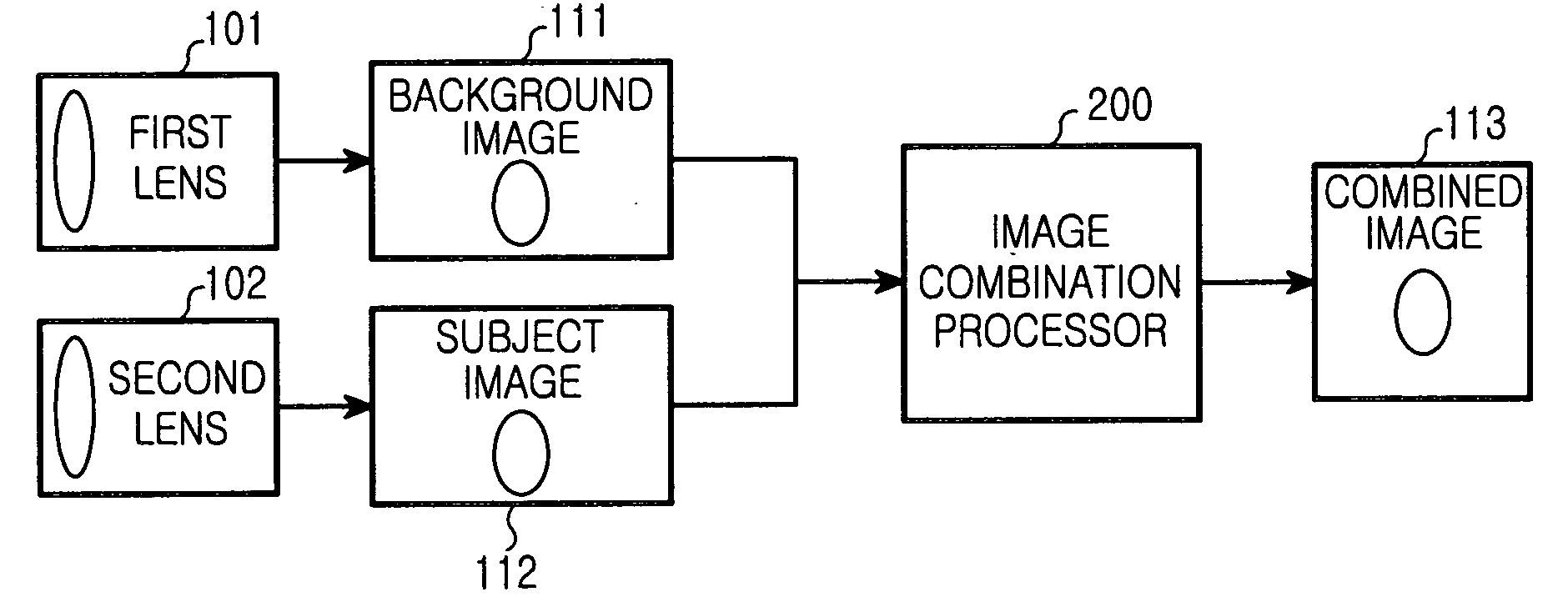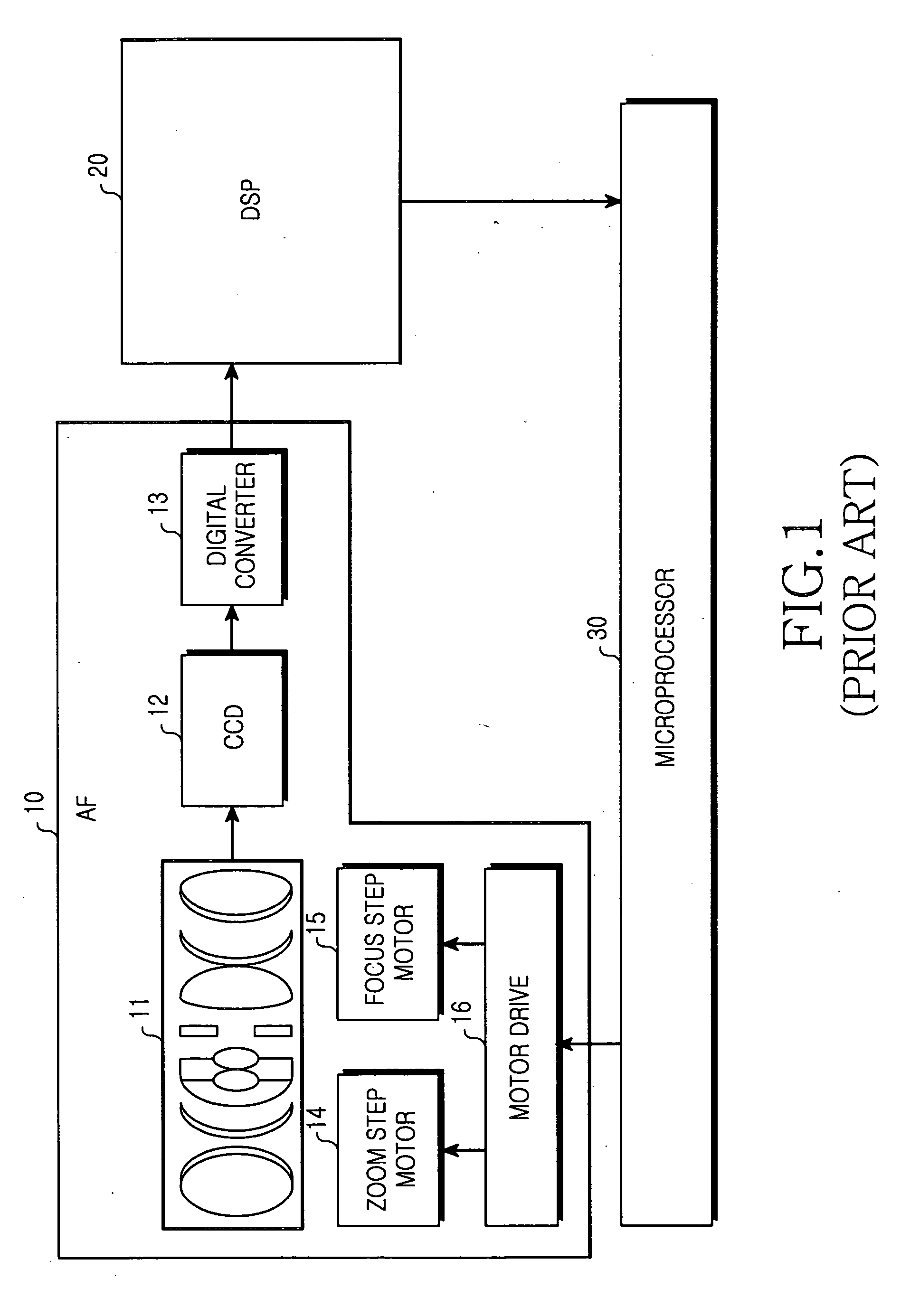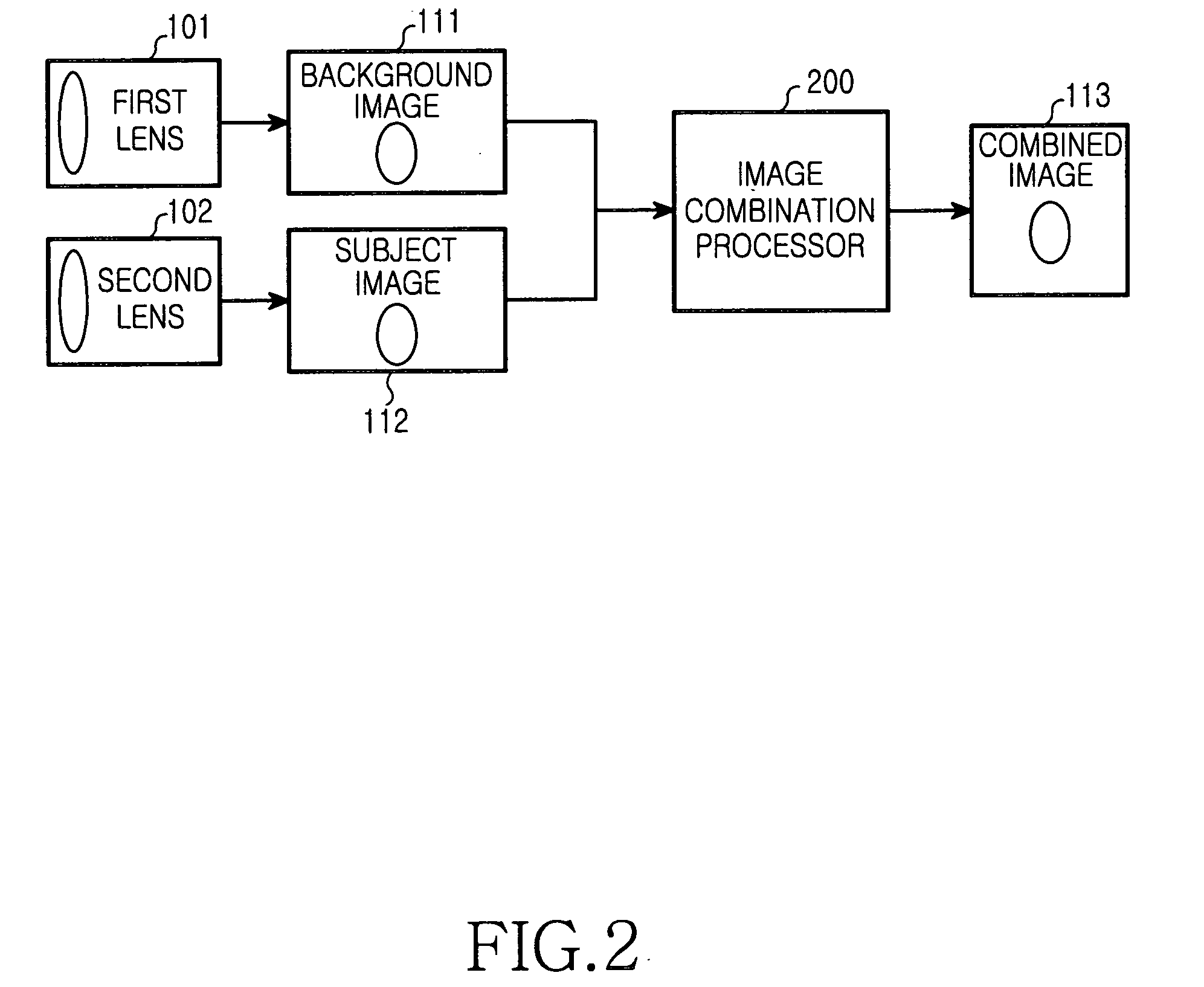Image photographing device and method
a technology of image and photographing device, which is applied in the direction of radio frequency controlled devices, printers, instruments, etc., can solve the problems of inability to use motor-using af functions, inability to control focus length, and inability to accurately calculate distances
- Summary
- Abstract
- Description
- Claims
- Application Information
AI Technical Summary
Benefits of technology
Problems solved by technology
Method used
Image
Examples
second embodiment
[0069]FIG. 12 is a detailed block diagram of the image combination processor according to the present invention.
[0070] Referring to FIG. 12, the image combination processor 300 includes the block matrix unit 210 for detecting high frequency components and generating an initial block matrix, the filter unit 220 for filtering a predetermined block value in the initial block matrix, a compensator 310 for correcting errors by extending filtered blocks, and the image combiner 230 for stitching compensated high frequency blocks, that is, the subject image 112 to the background image 111.
[0071] The block matrix unit 210 includes the block segmenter 211 for segmenting the background image 111 and the subject image 112 into blocks, the DCT 212 for representing the blocks in the frequency domain, the high frequency detector 213 for detecting high frequency components from the frequency-domain blocks, and the initial block matrix generator 214 for generating an initial block matrix out of the...
first embodiment
[0077] The background and subject images 111 and 112 are segmented into blocks and DCT-converted in the block matrix unit 210. The DCT is performed in the same manner as in the present invention and thus its detailed description is not provided here.
[0078] DCT blocks 402 are converted to high frequency blocks 403 in the high frequency detector 213. The frequency components of each of them are summed vertically and horizontally and a high frequency block having the most high frequency components is selected as an in-focus block. The DCT 212 can be implemented by using an existing DCT device mounted for video compression without being separately procured. The block values of the high frequency blocks 403 are determined in the initial block matrix decider 214 in the manner described with reference to FIG. 5.
[0079] After selecting the high frequency blocks, the initial block matrix is generated by calculating the block values f(i, j) of the blocks. f(i, j) is set to 0 if the subject im...
PUM
 Login to View More
Login to View More Abstract
Description
Claims
Application Information
 Login to View More
Login to View More - R&D
- Intellectual Property
- Life Sciences
- Materials
- Tech Scout
- Unparalleled Data Quality
- Higher Quality Content
- 60% Fewer Hallucinations
Browse by: Latest US Patents, China's latest patents, Technical Efficacy Thesaurus, Application Domain, Technology Topic, Popular Technical Reports.
© 2025 PatSnap. All rights reserved.Legal|Privacy policy|Modern Slavery Act Transparency Statement|Sitemap|About US| Contact US: help@patsnap.com



